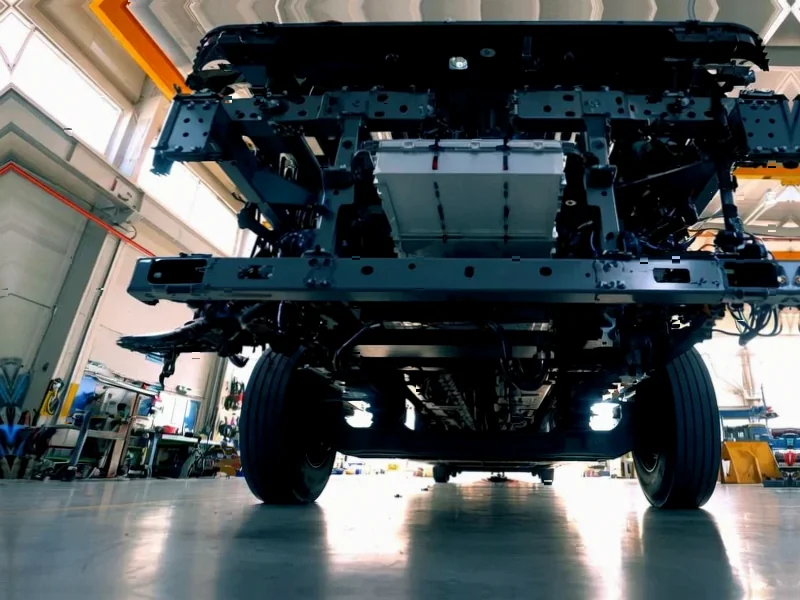According to DCD, power management company Eaton is acquiring Boyd Thermal from Goldman Sachs Asset Management for $9.5 billion in a deal expected to close in the second quarter of 2026. The acquisition brings Eaton Boyd’s liquid cooling technology portfolio, including cold plates, cooling distribution units (CDUs), and immersion cooling systems specifically designed for high-density computing applications. Boyd Thermal has forecast sales of $1.7 billion for 2026, with $1.5 billion coming specifically from liquid cooling products, and employs more than 5,000 people across manufacturing sites in North America, Asia, and Europe. Eaton CEO Paulo Ruiz stated that combining Boyd’s liquid cooling expertise with Eaton’s power management capabilities will help customers manage increasing power demands more effectively in data center environments. This massive acquisition represents a strategic pivot that will fundamentally reshape the competitive landscape for data center infrastructure.
The Great Infrastructure Consolidation Accelerates
This acquisition marks the most significant move yet in the ongoing consolidation of data center power and thermal management technologies. For years, these have been separate domains handled by different vendors – power companies like Eaton focused on UPS systems and power distribution, while thermal specialists like Boyd developed cooling solutions. The explosive growth of AI workloads, with GPU clusters consuming 40-70kW per rack, has made this separation unsustainable. Customers now demand integrated solutions that manage power and thermal holistically, and Eaton’s acquisition positions them as the first vendor capable of delivering true end-to-end infrastructure from the processor level to the utility connection. This puts immediate pressure on competitors like Vertiv, Schneider Electric, and nVent to either develop similar integrated capabilities or pursue their own strategic acquisitions.
The AI Workload Imperative
The timing and scale of this acquisition reflect the urgent market need for liquid cooling solutions capable of supporting next-generation AI infrastructure. Boyd’s recent launch of a 2.3MW CDU that can cool more than ten Nvidia NVL72 racks demonstrates they’re already addressing the most demanding AI cooling requirements. What makes this acquisition particularly strategic is that liquid cooling is no longer just about thermal management – it’s becoming integral to power architecture. As rack densities push beyond what traditional air cooling can handle, liquid cooling enables higher power utilization and potentially reduces overall energy consumption. Eaton now controls both the power delivery and thermal rejection systems, allowing them to optimize the entire energy chain rather than just individual components.
Winners and Losers in the New Ecosystem
The competitive implications are profound. Eaton instantly becomes the dominant player in integrated data center infrastructure, potentially capturing a larger share of customer budgets by offering comprehensive solutions. This puts specialized cooling companies like CoolIT Systems and Asetek in a difficult position – they now face a competitor with massive scale, established customer relationships, and the ability to bundle cooling with power products. For data center operators, this consolidation could simplify procurement but also reduce negotiating leverage as fewer vendors control more of the critical infrastructure stack. The deal also validates the entire liquid cooling market, which has been developing for decades but is now seeing explosive growth driven by AI demands that simply cannot be met with traditional air cooling approaches.
The $9.5 Billion Integration Challenge
While the strategic rationale is clear, the execution risks are substantial. Integrating 5,000 employees across three continents while merging engineering cultures and product roadmaps represents a monumental challenge. The 2026 closing timeline suggests both companies recognize the complexity involved. There’s also the question of whether Eaton can maintain Boyd’s innovation velocity while scaling the business – thermal management for AI workloads requires rapid iteration as chip manufacturers like NVIDIA and AMD continue pushing power envelopes higher. The acquisition price of $9.5 billion represents approximately 5.6 times Boyd’s projected 2026 revenue, indicating Eaton is paying a premium for strategic positioning rather than immediate financial returns.
Future Market Dynamics and Customer Impact
Looking forward, this acquisition will likely trigger further consolidation as other power management companies seek thermal partners and cooling specialists look for scale. For hyperscale operators and colocation providers, the emergence of integrated power and cooling solutions could accelerate adoption of liquid cooling, particularly for AI clusters. However, there are concerns about vendor lock-in and reduced competition in what has traditionally been a fragmented market. The deal also signals that liquid cooling is moving from niche application to mainstream infrastructure, with implications for data center design, operational practices, and total cost of ownership calculations across the industry.




